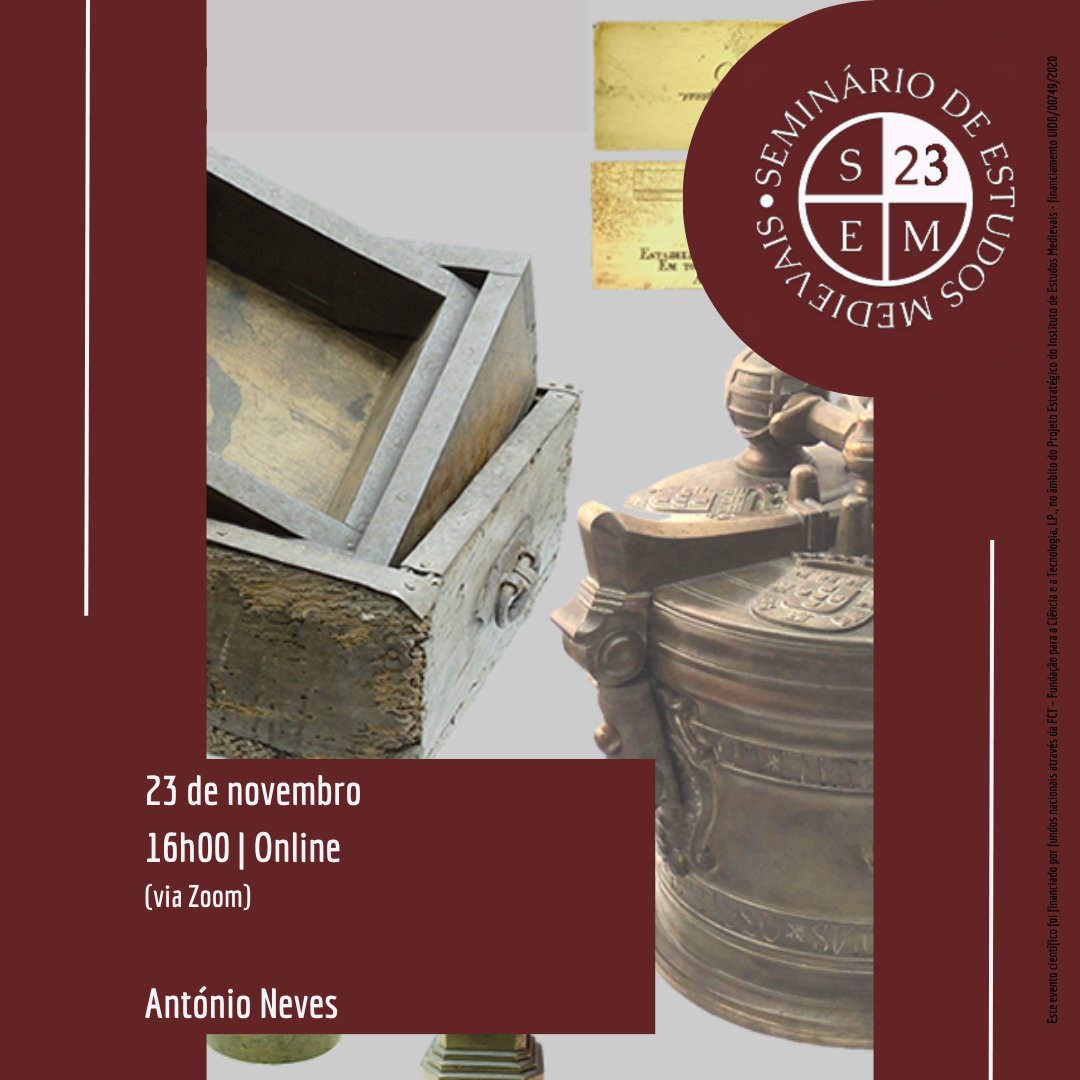Seminar in Medieval Studies: “Pesos e Medidas em Portugal” | António Manuel Félix Baptista Neves
23.11.2023 | 16:00 - 17:00
Zoom session

The Seminar in Medieval Studies: “Pesos e Medidas em Portugal” (Weights and Measures in Portugal), by António Manuel Félix Baptista Neves, will take place on November 23rd, at 4pm, online (via Zoom).
Abstract:
This communication aims to address the evolution of weights and measures used in Portugal, from the beginning of nationality to contemporary times. The History of Portuguese Metrology can be characterized into three periods:
1. The Middle Ages, characterized by the lack of national standards, a great diversity of weights and measures and measurement systems whose units were inherited from the language and culture of the people who had been in the Iberian peninsula, in particular the Arabic language. In this period, initiatives by some monarchs stand out, namely D. Afonso Henriques and D. Pedro I;
2. The reforms of the modern era, namely those of D. Manuel I and D. Sebastião, complemented by Filipe I, aiming at standardization, with the adoption of a national standard and distribution of standards across the country. In the volumes we find perhaps the first attempt to create a metrological traceability chain;
3. The adoption of the Decimal Metric System, already in the 19th century, in a first version by the Prince Regent who came to reign as D. João VI and later, definitively, by Queen D. Maria II. Portugal is at the forefront of contemporary metrology, in the context of the signing of the Metro Convention.
Although communication covers practically all of our History, it is clear that, despite all the initiatives aimed at systematization and standardization, we have practically reached the present day, and, much more evidently in the 19th century, using units of measurement whose origin is medieval, both in terminology and in the values associated with many of these measures. We come across terms that are part of our collective memory, such as alqueire, almude, cubit, arroba or manual mistress.
It is evident, throughout our history, particularly for a particular quantity (volume, both in solids and liquids), the subsistence of a logic of diversity, resulting from the coexistence of competing interests, which was the striking characteristic of medieval period, which is sufficiently documented by measurements and comparisons carried out in the 17th century. XIX.
Biographic note:
Graduated in History from the Faculty of Social and Human Sciences of Universidade Nova de Lisboa in 1988, he joined the Portuguese Institute of Quality that same year where he has worked ever since, with a brief 6-month break at the General Secretary of the Ministry of Finance and 18 months in the Central Administration of the Health System.
Since 2011, he has been responsible for the IPQ Metrology Museum, where he serves as Curator. In the context of this mission, he has carried out research work on the History of Metrology in Portugal, taking as a starting point the rich metrological heritage of historical interest held by the Museum, consisting of around 3000 measuring instruments and standards, part of which exhibited at the Permanent Exhibition “Weights and Measures in Portugal”.
At the same time, he carried out teaching activities in different contexts, mainly in areas associated with Information Technology, in particular when applied to archives and libraries, namely in Polytechnic education and for BAD – Portuguese Association of Librarians, Archivists, Information and Documentation Professionals.
In the context of his duties at the Metrology Museum, he has collaborated with several national and foreign researchers. He also participates in several projects, and is currently responsible for the Metrology section of NADL – The Nautical Archeology Digital Library, which started at Texas A&M University and is now part of the Center for Maritime Archeology at the University of Coimbra.
